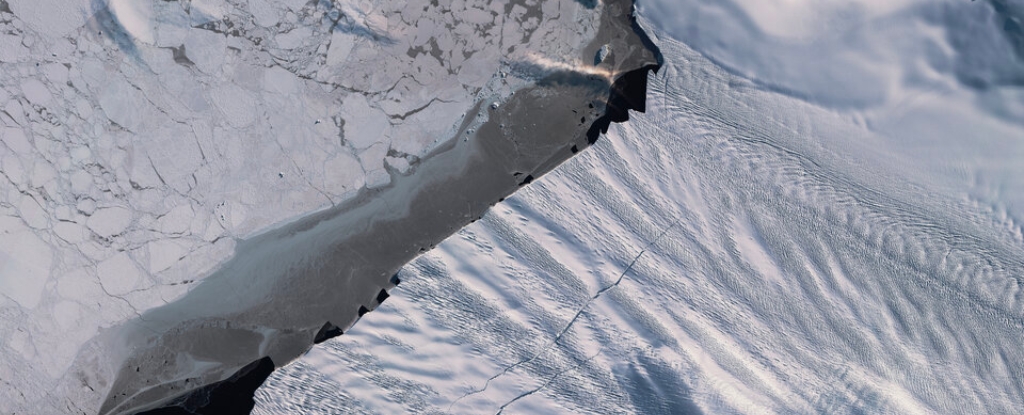
Pine Island Glacier, a swiftly flowing ice outlet from the western Antarctic ice sheet, covering an expanse three-quarters the size of the UK, is drawing attention for its rapid retreat and consequential contribution to global sea level rise, surpassing other Antarctic glaciers.
The swift retreat and accelerated ice loss of Pine Island Glacier have raised apprehensions about the region’s stability. According to model results, the potential collapse of West Antarctica looms in the future, with the possibility of raising global mean sea levels by several meters.
Examining past instances of rapid global sea-level rise, particularly during periods of accelerated glacier mass loss, reveals a phenomenon known as “marine ice sheet instability.” Glaciers in West Antarctica, once experiencing a small retreat due to climate changes, can continue this retreat even if the change is reversed, pushing the glacier beyond a tipping point and causing rapid mass loss until a new state is reached.
The irreversible retreat mechanism, well understood in theory, has been substantiated in a recent study. Pine Island Glacier underwent irreversible mass loss and retreat starting in the 1940s, with a temporary surge in melting beneath its floating ice shelf pushing it past a tipping point. This accelerated retreat concluded by the 1990s.
In a separate study, utilizing the same model, it was found that unless global warming is kept within safe limits, Pine Island Glacier is poised to cross future tipping points. This underscores the urgency of climate action to preserve the stability of West Antarctica and prevent further irreversible retreat.
What happened?
Before the 1940s, Pine Island Glacier reached farther than its current extent. The grounding line, the point where glacial ice transitions from grounded to floating in the ocean, was positioned 40 km downstream on a shallow seabed ridge, providing stability for the glacier for an estimated 5,000 to 10,000 years.
Recent observations indicate varying ocean conditions beneath the floating ice shelf from year to year. Periodically, warmer waters come into contact with the ice’s underside, resulting in significant melting from below.
In the 1940s, a climate anomaly in West Antarctica, potentially associated with a substantial El Niño event link, may have induced a temporary shift in ocean conditions.
Our research suggests that increased melting beneath the ice shelf due to altered ocean conditions led to the thinning of grounded ice upstream. This created a gap between the grounded glacier and the seabed, allowing warmer ocean waters to flow beyond the ridge. Supporting evidence from sediment studies beneath the current ice shelf backs up these findings.
As warmer waters circulate beneath the exposed ice, it initiates further melting and thinning at an accelerated rate.
Our model indicates that this triggered swift retreat and expedited ice flow over the subsequent two to three decades, culminating in the detachment of the ice shelf from the ridge between the late 1970s and the early 1980s. The retreat pattern and timeline depicted in our model align with observations of changes in the glacier.
Irreversible change
Following the detachment of the ice shelf from the ridge, there was a deceleration in ice flow and a more gradual retreat, ultimately halting in the early 1990s when the grounding line reached a shallow bedrock section.
Our analysis indicates that the rapid retreat phase from the 1940s to the 1970s was irreversible. Even if ocean conditions cooled with reduced melting beneath the shelf during that period, it couldn’t halt the ongoing mass loss.
These findings underscore the significance of a substantial increase in melting at the base of a glacier’s floating ice shelf, potentially pushing it past a tipping point. In such cases, even if conditions cool down, the loss of ice mass may prove irreversible.
The future implications are evident: past events could recur. Crossing future ice sheet tipping points means reverting to previous climate conditions might not suffice to rectify the damage.
Read the original article.





